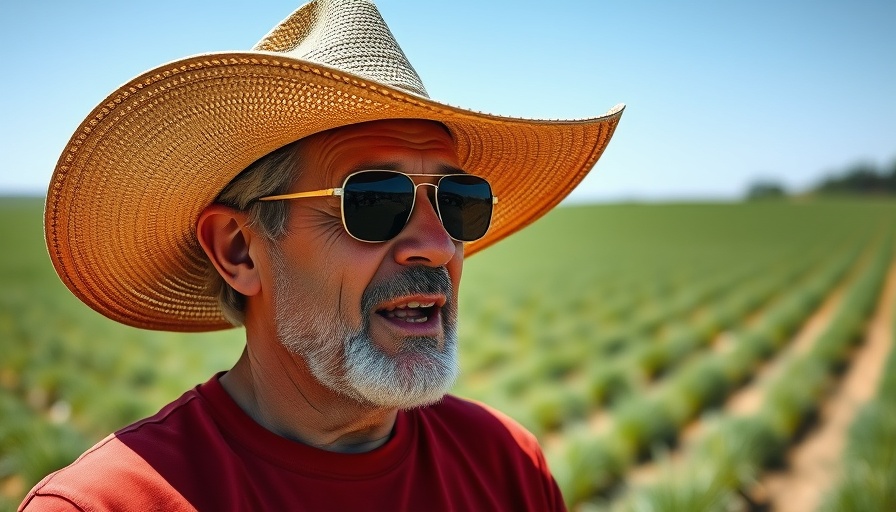
Unlock Your Garden's Potential with Maximal Plant Growth
If you’re eager to grow robust cabbage, brussels sprouts, and onions, you’re in for an exciting gardening journey. In the video titled Maximize Cabbage, Brussels Sprouts & Onion Growth!, expert insights unfold strategies that can significantly enhance your vegetable gardening experience. With effective planting tips, you’ll be well-equipped to nurture these delightful vegetables right in your backyard.
In Maximize Cabbage, Brussels Sprouts & Onion Growth!, the video presents actionable planting strategies that inspire us to delve deeper into how we can enhance our gardening experiences.
Essential Planting Techniques for Success
Understanding the fundamentals of planting is key to growing strong crops. When starting any vegetable garden, timing and technique are crucial. For cabbages and brussels sprouts, opt for early spring or late summer planting. This timing allows you to harness the optimal temperatures for growth. Onions, on the other hand, can be sown in early spring or fall, depending on whether you’re using seeds or sets.
Moreover, spacing is just as critical as timing. Both cabbage and brussels sprouts need room to develop their heads fully - space them at least 18 inches apart to allow for adequate air circulation and sunlight. For onions, you can plant them closer together, about 4 inches apart, enabling a bountiful harvest.
The Role of Soil Quality
Healthy vegetables start with healthy soil. Before planting, ensure your soil is rich in organic matter and nutrients. A mixture of compost and well-rotted manure can work wonders, providing the essential nutrients these veggies crave. Additionally, be mindful of pH levels; a neutral to slightly acidic pH (around 6.0 to 7.0) is ideal. To nurture your plants for maximum growth, consider amending your soil with natural fertilizers that support strong root development.
Benefits of Planting Your Own Vegetables
Growing your own vegetables goes beyond simply harvesting fresh food. It fosters a connection with the earth, promotes sustainable living, and can even be a therapeutic outlet. Cultivating cabbage, brussels sprouts, and onions allows you to enjoy nutritious meals straight from your garden. What better way to have fresh vegetables than to grow them yourself?
There’s something deeply satisfying about watching your plants flourish, knowing you’ve contributed to your health and well-being in a positive way. Consider the impact of fresh, organic produce on your nutrition—it’s a game-changer. Every bite you take of your home-grown vegetables is also a step toward healthier living.
Embrace the Gardening Challenge!
Gardening can come with its challenges, but where there’s a will, there’s a way. If you’re facing issues such as pests or plant diseases, don’t shy away. Utilize organic methods such as companion planting or natural pesticides to keep your crops healthy and vibrant.
If you’re new to growing cabbage, brussels sprouts, and onions, start small! Focus on cultivating healthy plants and celebrating each little victory along the way. Embrace the journey, and soon you’ll be enjoying an abundance of your hand-grown vegetables!
So, get your hands dirty and begin your vegetable gardening adventure today. With these tips and a little commitment, you can maximize your crop yields and enjoy vibrant, fresh produce right from your backyard!
 Add Row
Add Row  Add
Add 




Write A Comment